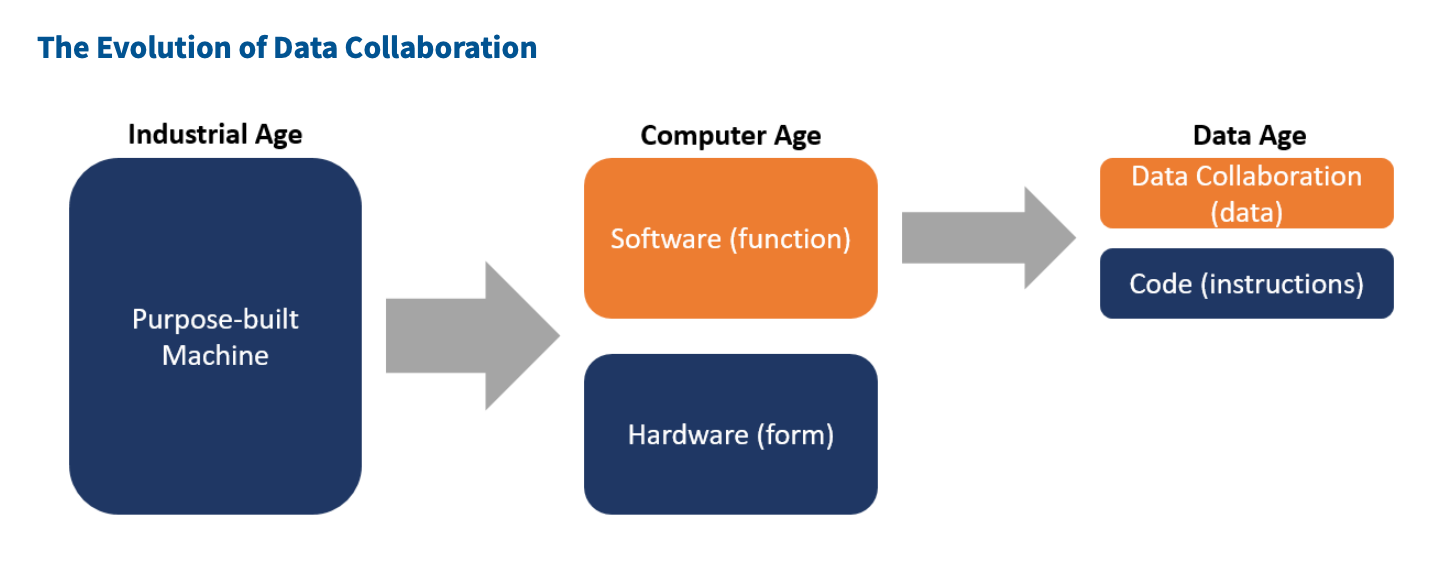The fact that there’s an app for everything – and that we all depend on them for just about every task – hides a complicated reality. These apps effectively fracture our data, and we need teams of data professionals to put it all back together. That’s what data integration entails, and it’s become so fundamental that we’ve stopped questioning it. But we should: The market needs something very different—basically, a unified model of the data from the beginning, not after the fact.
“The Rise of Data Collaboration,” a new report commissioned by Cinchy and created by Eckerson Group, delves into a new architectural approach that delivers exactly this arrangement. Data collaboration creates a shared data layer for applications while providing a unique baseline for analytics. It’s an evolution in both technology and methodology, and the potential is unprecedented.
It can be argued that modern technology begins with freeing software from hardware. This enabled a given piece of hardware to perform multiple tasks, a revolution at the time. Similarly, the act of decoupling data from software heralds a new era. Data collaboration essentially eliminates the need for applications to have their own data store, or ship data to other apps or repositories. In this model, developers build their apps on top of a centralized data store from the very start.

To be clear, since there are so many overlapping concepts now, data collaboration is not a data warehouse, which features a structured central data repository that stores data in a predefined model and copies of that data. Data collaboration is also not data virtualization, which offers a business view of distributed data that uses query federation to join data from heterogeneous systems in real time. And it’s not a data lake, which stores structured, semi-structured and unstructured data in its native format. It’s also not master data management, though it perfectly complements and enhances that approach.
Data collaboration represents a bold reimaging of the relationship between data and applications. It seeks to reduce the burden of integration by providing a shared data layer for all applications even as it provides a base for analytics. The approach is still evolving, but the potential ramifications are already significant on data itself and the software universe at large.
“If data collaboration can overcome the initial hurdles of adoption and gain widespread acceptance,” the report notes, “it will flip the data technology industry on its head.”





